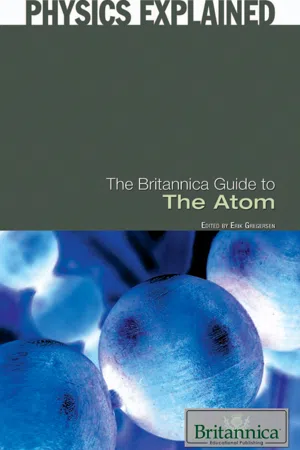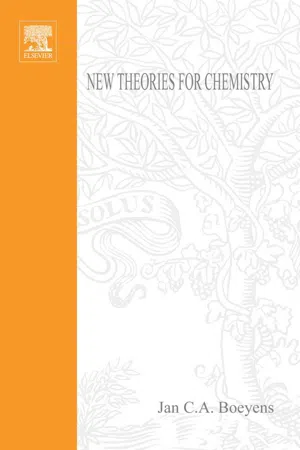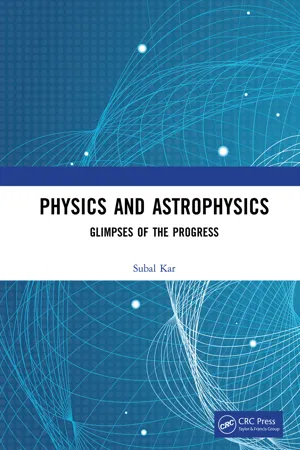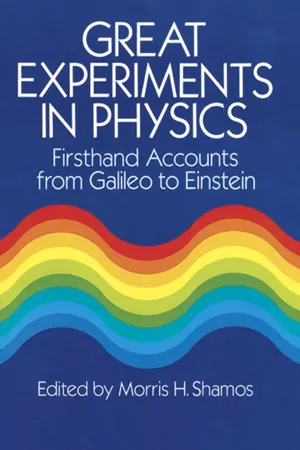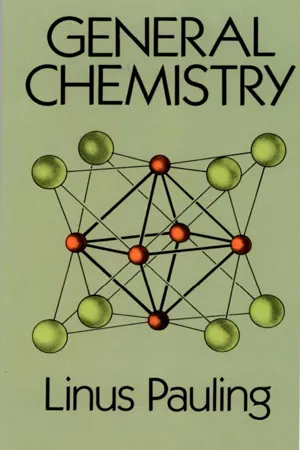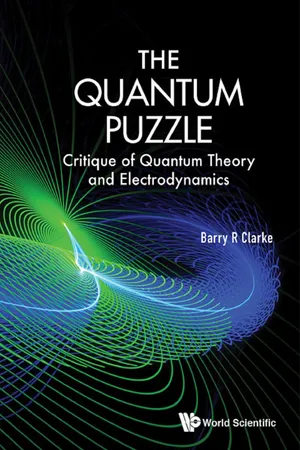Physics
Discovery of the Electron
The discovery of the electron is a pivotal moment in the history of science, credited to J.J. Thomson in 1897. Through his experiments with cathode rays, Thomson demonstrated the existence of negatively charged particles, which he named "electrons." This discovery revolutionized our understanding of atomic structure and laid the foundation for the development of modern physics.
Written by Perlego with AI-assistance
Related key terms
Related key terms
1 of 4
Related key terms
1 of 3
9 Key excerpts on "Discovery of the Electron"
- eBook - ePub
From Atoms to Higgs Bosons
Voyages in Quasi-Spacetime
- Chary Rangacharyulu, Christopher J. A. Polachic(Authors)
- 2019(Publication Date)
- Jenny Stanford Publishing(Publisher)
As things stand, then, we would suggest that protons and neutrons may yet qualify as irreducible building blocks of ordinary matter, despite their finite size and internal properties. Indeed, we will reinforce this suggestion in the next chapter by questioning the ontological status of quarks, arguing that this status may well be entirely dependent on quasirealist interpretation of mathematical formalism. If that is the case, then protons and neutrons might be true atoms in the Democritian sense.7.4 The Electron Is Fundamental, but Is It Still a Particle?
The electron was the first particle discovered. It was observed in experiments performed by J. J. Thomson10 in the late nineteenth century11 and was soon understood as an essential constituent of atoms, along with protons and neutrons. In contrast to the nucleons, electrons have thus far retained the esteemed distinction of being fundamental: Today they are accepted by everyone as truly elementary bodies, not composed of any smaller components.Electrons are the lightest charged particle. An isolated or “free” electron has a mass of 0.511 MeV/c 2 (9.11 × 10–31 kg) and one negative unit of the fundamental electric charge (–1.602 × 10–19 coulomb). These properties are well established through straight-forward experiments and provide the necessary inputs to determine the kinematical behavior of electrons within Newtonian theory.7.5 The Electron of Wave Mechanics
The advent of quantum theory in the early twentieth century radically changed the concept of a free particle, and the electron was the first entity to suffer the ontological consequences. As is well known, Niels Bohr introduced an early quantum model of the hydrogen atom in which the bound electron can only occupy discrete orbital states around the nucleus, transitioning between these states in quantum jumps associated with specified, allowed changes to its angular momentum state, and the absorption and emission of discrete frequencies of light. Within these stable orbits, the electron would defy the expectations of classical electrodynamics by never radiating away energy due to its constant change in direction of travel. On the surface, the assumptions of Bohr’s model appear artificial, designed as ad hoc postulates that nonetheless provide a sufficient physical model to explain some real experimental data relating to absorption and emission of light by atoms. But the jarring characteristics ascribed to electrons in the atom require explanation.12 - eBook - ePub
- Britannica Educational Publishing, Erik Gregersen(Authors)
- 2010(Publication Date)
- Britannica Educational Publishing(Publisher)
From the magnitude of the electrical and magnetic deflections, Thomson could calculate the ratio of mass to charge for the electrons. This ratio was known for atoms from electrochemical studies. Measuring and comparing it with the number for an atom, he discovered that the mass of the electron was minuscule, merely 1/1,836 that of a hydrogen ion. When scientists realized that an electron was virtually 1,000 times lighter than the smallest atom, they understood how cathode rays could penetrate metal sheets and how electric current could flow through copper wires. In deriving the mass-to-charge ratio, Thomson had calculated the electron’s velocity. It was 1/10 the speed of light, thus amounting to roughly 30,000 km (18,000 miles) per second. Thomson emphasized thatThus, the electron was the first subatomic particle identified, the smallest and the fastest bit of matter known at the time.we have in the cathode rays matter in a new state, a state in which the subdivision of matter is carried very much further than in the ordinary gaseous state; a state in which all matter, that is, matter derived from different sources such as hydrogen, oxygen, etc., is of one and the same kind; this matter being the substance from which all the chemical elements are built up.MILLIKAN OIL -DROP EXPERIMENTIn 1909 the American physicist Robert Andrews Millikan greatly improved a method employed by Thomson for directly measuring the electron charge. He began by measuring the course of charged water droplets in an electrical field. The results suggested that the charge on the droplets is a multiple of the elementary electric charge, but the experiment was not accurate enough to be convincing.In Millikan’s subsequent experiment, he produced the first direct and compelling measurement of the electric charge of a single electron by measuring the minute electric charge that is present on many of the droplets in an oil mist. The force on any electric charge in an electric field is equal to the product of the charge and the electric field. Millikan was able to measure both the amount of electric force and magnitude of electric field on the tiny charge of an isolated oil droplet and from the data determine the magnitude of the charge itself. - eBook - ePub
- Max Born(Author)
- 2013(Publication Date)
- Dover Publications(Publisher)
CHAPTER IV The Electronic Structure of the Atom1. The Discovery of the Positive Charges in the Atom.N OW we know enough about the electron to be able to study the structure of the atom accurately.The first question is one which we have already asked more than once, but have not yet answered: where is the positive electricity in the atom? For, as the whole atom is electrically neutral and it has negative electrons in its outer regions, there must be a positive charge somewhere inside.We must therefore penetrate into the interior of the atom. For this purpose we shall find fast particles useful, as they have great momentum. The first systematic investigations of this kind were made by Lenard, using fast cathode rays. As we have already mentioned (p. 94 ), these will pass through thin layers of metal. In solid bodies the atoms are tightly packed together. The outer shells of electrons of one atom are almost touching those of the next. If an electron flies through with only a small deviation of direction it must have passed through the interior of the atom almost undisturbed (65). This interior must therefore be comparatively empty, in spite of its compact outer layer.Occasionally, an electron is strongly deviated; we naturally suppose that it has struck some solid obstacle. Lenard was able to explain the bulk of his observations by assuming that in the interior of the atom there are a number of heavy positively charged particles, which he called “dynamids”.We shall not, however, use these experiments to explain how such conclusions can be drawn, but those of Rutherford instead. Rutherford used heavier projectiles, the α-particles from radioactive substances, which we have already mentioned (p. 102 - eBook - ePub
Radioactivity
History, Science, Vital Uses and Ominous Peril
- Michael F. L'Annunziata(Author)
- 2022(Publication Date)
- Elsevier(Publisher)
− 1. The new particle was also the smallest particle to be known at that time, as in Thomson's own words:for the corpuscle in the cathode rays the value e/m is 1,700 times the value of the corresponding quantity for the charged hydrogen atom.Thomson noted that this new negatively charged particle not only occurred in the cathode rays, but also was widely distributed. In this respect, Thomson stated the following with the author’s comments in brackets:They are given off by metals when raised to a red heat; indeed any substance when heated gives off corpuscles to some extent. The corpuscles [electrons] are also given off by alkali metals, when these are exposed to light. [This phenomenon was later studied by others as the photoelectric effect.] … They are being continuously given out in large quantities and with very great velocities by radioactive substances.It was not known during Thomson's work, but it was discovered years later that beta particles from radioactive sources and electrons only differ in their origins. Beta particles originate from the decaying nuclei of unstable or radioactive atoms and electrons originate from the outer regions or orbitals of atoms.The term “electron” was coined by George Johnstone Stoney, Professor of Queen's College (now University College) Galway, Ireland, in a paper in The Scientific Transactions of the Royal Society, Dublin, in 1891.1.9.2. The discovery of a stable isotope of an element and mass spectrometry with Francis W. Aston
Another great accomplishment of J.J. Thomson was the discovery of an isotope of a stable element. Frederick Soddy (1877–1956) postulated the existence of stable isotopes of the elements when he stated the following in his Nobel address: - eBook - ePub
- Jan C.A. Boeyens(Author)
- 2005(Publication Date)
- Elsevier Science(Publisher)
e.g . X-rays) from an electron defines a differential scattering cross section=d σd Ωenergy radiated/unit time/unit solid angle incident energy flux in energy/unit area/unit timeFor unpolarized incident radiation, using electrostatic units,=d σd Ω·(2)e 2mc 21 2( 1 +cos 2θ )The total scattering cross section, called the Thomson cross section,σ T=8 π3(2)e 2mc 2The unit of length, e 2 /mc 2 = 2.82 × 10−13 cm, is called the classical electron radius, because a classical distribution of charge totalling the electronic charge must have a radius of this order for its electrostatic self-energy to be equal to the electronic mass energy. This estimate of the size of an electron is crude, but still the only one available.The earliest classical theories were based on an electron considered a spherical atom of electricity and of mass, entirely electromagnetic in origin. According to a relativistic (Lorentz) version of this theory one assumes a flexible spherical charge distribution as the concept of rigidity is not relativistically invariant. This explanation was only partially successful because the various parts of such a charged sphere should dissipate in space due to Coulombic repulsion. The solution (Poincaré,) [56] - eBook - ePub
Physics and Astrophysics
Glimpses of the Progress
- Subal Kar(Author)
- 2022(Publication Date)
- CRC Press(Publisher)
B.C . In 1897, J. J. Thomson, on the basis of his famous cathode ray experiment, first proposed that even the atom has constituent parts. With the Discovery of the Electron, he proposed the so-called plum-pudding model of the atom. In his model, the atom was considered to be a soup of positive charges, and negatively charged electrons were thought to be embedded within it to balance the total positive charge, as if the electrons were like plums and the atom as pudding. This concept was further modified by Ernest Rutherford who in 1911 introduced the idea of the nucleus in the atomic structure on the basis of his α-particle scattering experiment and proposed a solar system like model of the atom. Later, Niels Bohr proposed anatomic model that could resolve the problem of Rutherford's model of the fast spiraling fall of electron to the nucleus, jeopardizing the stability of the atom. In Bohr's atomic model, electrons rotate around the central nucleus in some specified stationary orbits and the electron is transferred from one stationary orbit to another with the emission/absorption of a photon. Finally, on the basis of the wave particle duality of the electron propounded by de Broglie and the uncertainty principle of Heisenberg, the stationary orbits of the atom proposed by Bohr's atomic model were justified. Ultimately, on the basis of the superposition property of the electron as per quantum mechanics, the concept of the electron cloud was introduced by Heisenberg and Schrödinger in the modern atomic model.Thus, until the 1930s, the basic atomic structure (as per quantum theory) consisted of a cloud of electrons surrounding a central massive nucleus (see the modern atomic structure, Fig. 4.1a ). The electron cloud is roughly 10−8 cm in size (about a millionth of the diameter of a human hair), the nucleus at the core of the atom is 10,000 times smaller than that, that is, roughly 10−12 cm (Fig. 4.1b), and the atomic nucleus is several thousand times heavier than the tenuous electron cloud. Each atomic nucleus contains an equal number of protons and neutrons, and all the neutrons and protons are held together tightly in their tiny nucleus by a new type of force, neither electrical nor gravitational—a force called nuclear force (to be more specific, a strong nuclear force). Each neutron has the same mass as a proton but has no electrical charge, while the proton has a positive charge that is equal and opposite to that of the electron. The mass of the electron is me = 9.1 × 10−31 kg, and the mass of the proton is mp = 1.67 × 10−27 kg (i.e., 1835 me - eBook - ePub
Great Experiments in Physics
Firsthand Accounts from Galileo to Einstein
- Morris H. Shamos(Author)
- 2012(Publication Date)
- Dover Publications(Publisher)
16The Electron
J. J. Thomson 1856 - 1940NEW DISCOVERIES in science often lead to developments in the most unexpected quarters. We have seen how Roentgen’s discovery of x-rays led Becquerel to the investigations from which he chanced upon his discovery of radioactivity. The discovery of x-rays led as well to increased activity in the field of gas discharges. The atomic theory of matter was, by that time, firmly established on the strength of chemical evidence and the kinetic theory of gases. The electrical nature of matter was also readily apparent. But the actual connection between electrical and atomic properties was not clearly recognized. No doubt those who investigated the passage of electricity through gases believed that their studies might provide the essential link between these phenomena. At least this was the goal that induced J. J. Thomson to undertake research in gas discharges during the last decade of the nineteenth century. There were others who preceded him, notably J. W. Hittorf (1824–1914), Sir William Crookes (1832–1919), Eugen Goldstein (1850–1930), and Jean Baptiste Perrin (1870–1942), but their investigations added chiefly to the qualitative aspects of gas discharge phenomena.The technique was generally the same in each case; a glass tube with platinum electrodes was gradually evacuated while a (large) potential difference was applied between the electrodes. The visible discharge was then studied as a function of pressure, electric field, and nature of the gas. There were several significant advances prior to the discovery of x-rays. It was known, for example, that in these discharges a radiation emanated from the cathode or negative electrode which exhibited certain interesting properties. Perhaps the most significant of these was the green fluorescence that was produced in the glass walls wherever the radiation fell upon them. In 1869 Hittorf showed the rectilinear propagation of the radiation by placing obstacles between the cathode and glass walls and showing that “optical” shadows were formed. This was confirmed several years later by Goldstein, who introduced the name cathode rays - eBook - ePub
- Linus Pauling(Author)
- 2014(Publication Date)
- Dover Publications(Publisher)
3 The Electron the Nuclei of Atoms and the Photon During the period of fourteen years beginning in 1897 it was discovered that atoms are composed of smaller particles, and that these smaller particles carry electric charges. Photons, the units of radiant energy, were discovered at the same time. The discovery of the components of atoms and the investigation of the structure of atoms constitute one of the most interesting stories in the history of science. Moreover, knowledge about the electronic structure of atoms has permitted the facts of chemistry to be systematized in a striking way, making the subject easier to understand and to remember: it has been discovered that the bonds that hold atoms together in molecules consist of pairs of electrons held jointly by two atoms. The student of chemistry can be helped greatly in mastering his subject by first obtaining a good understanding of the structure of the atom. 3-1. The Nature of Electricity The ancient Greeks knew that when a piece of amber is rubbed with wool or fur it achieves the power of attracting light objects, such as feathers or bits of straw. The phenomenon was studied by William Gilbert (1540-1603), Queen Elizabeth I’s physician, who invented the adjective electric to describe the force of attraction, after the Greek word elektron, meaning amber. Gilbert and many other scientists, including Benjamin Franklin (1706-1790), investigated electric phenomena, and during the nineteenth century many discoveries were made about the nature of electricity and of magnetism (which is closely related to electricity). It was found that if a rod of sealing wax, which behaves in the same way as amber, is rubbed with a woolen cloth, and a rod of glass is rubbed with a silken cloth, an electric spark will pass between the sealing-wax rod and the glass rod when they are brought near one another. Moreover, it was found that a force of attraction operates between them - eBook - ePub
Quantum Puzzle, The: Critique Of Quantum Theory And Electrodynamics
Critique of Quantum Theory and Electrodynamics
- Barry R Clarke(Author)
- 2017(Publication Date)
- WSPC(Publisher)
3 The Electron You know, it would be sufficient to really understand the electron.— (Albert Einstein)13.1Preliminary
In the late nineteenth century, there was a distinction between the ‘ethereal’ and the ‘material’. Certain German physicists supported the view that cathode rays were “due to some process in the æther”,2 pointing out ways in which the rays behaved like electromagnetic waves. For example, their discharge produced phosphorescence, and both Hertz and Lenard had shown that it could penetrate thin metallic sheets.3 In an erroneously designed experiment, Hertz tried and failed to deflect the rays in an electric field, a result that lent further support to an ethereal disturbance. The view that cathode rays were streams of charged particles was popular with British and French scientists. William Crookes cited the mechanical characteristics of the rays, pointing out that radiant matter “exerts strong mechanical action where it strikes” and “produces heat when its motion is arrested”.4 Less than a decade later, J. J. Thomson succeeded in deflecting the rays in an electric field — it seems that Hertz’s vacuum had not been rare enough — and performed a calculation to estimate their charge-to-mass ratio.However, despite these successes in discovering its behaviour, the nature of the electron was still a mystery, so much so that Sommerfeld was led to admit that:The electron is a stranger in electrodynamics, as Einstein has said on occasion. We cannot comprehend, from the electrodynamic standpoint, how the finite electron charge e, concentrated in a point or in a very small volume, can cohere stably in spite of the Coulomb forces between parts of the charge.5
Index pages curate the most relevant extracts from our library of academic textbooks. They’ve been created using an in-house natural language model (NLM), each adding context and meaning to key research topics.
Explore more topic indexes
Explore more topic indexes
1 of 6
Explore more topic indexes
1 of 4

